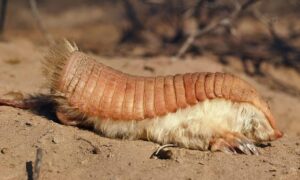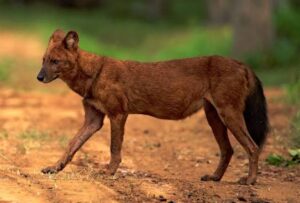Quokka: The Happiest Animal in the World
Introduction
Imagine walking through a sunlit coastal forest in Western Australia and spotting a small, furry creature hopping about with the energy of a wallaby but the charm of a teddy bear. Its rounded face, bright eyes, and a mouth that curves naturally into what looks like a constant grin make it seem as though it is smiling right at you. This animal is the Quokka (Setonix brachyurus)—a marsupial so irresistibly cute that it has been dubbed “the happiest animal in the world.”
The quokka is more than just an internet sensation. While it has gained fame thanks to social media selfies and tourism campaigns, its story is also one of survival, adaptation, and fragility. Closely related to kangaroos and wallabies, quokkas are part of the macropod family, but they stand out with their small size, unique habitat preferences, and endearing behavior. Today, they are restricted to a few islands and small pockets of mainland Australia, where they play an important ecological role and serve as ambassadors for wildlife conservation.
In this article, we’ll explore everything about the quokka—its discovery, anatomy, behavior, ecological niche, relationship with humans, and why protecting it is more important than ever.
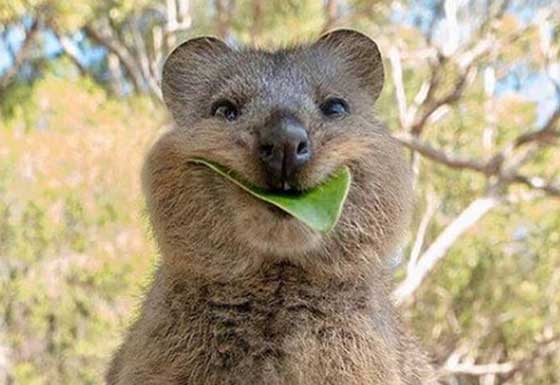
The Name and Early Discovery
The quokka owes its name to a case of mistaken identity. In 1696, Dutch explorer Willem de Vlamingh arrived on the coast of what is now Western Australia. When he landed on a nearby island, he encountered an abundance of small, furry creatures hopping around. Believing they were large rats, he named the place Rottnest Island, which translates to “Rat’s Nest Island” in Dutch. Of course, these were not rats at all—they were quokkas.
The scientific name, Setonix brachyurus, comes from Greek roots: brachy meaning “short” and oura meaning “tail.” Indeed, compared to other macropods, quokkas have noticeably shorter, rounded tails.
European naturalists later recognized them as members of the kangaroo family, but their unusual appearance and island lifestyle made them a subject of fascination.
Size and Physical Description
Quokkas are relatively small marsupials. On average:
- Length: 40–54 cm (16–21 inches) from head to body
- Tail length: 25–30 cm (10–12 inches)
- Weight: 2.5–5 kg (5–11 lbs)
Their fur is coarse, brownish-gray, and provides excellent camouflage in their shrubby habitats. The most iconic feature is their facial structure—short snout, rounded cheeks, and upturned mouth corners that create the illusion of a smile.
Other notable traits include:
- Short ears that are rounded, unlike the long ears of rabbits.
- Strong hind legs adapted for hopping, though not as powerfully built as those of kangaroos.
- Prehensile paws with five digits, useful for grasping food.
- Small, rounded tail that stores fat and helps with balance.
Despite their resemblance to wallabies, quokkas are more compact and stocky, built for survival in dense underbrush and island environments rather than open plains.
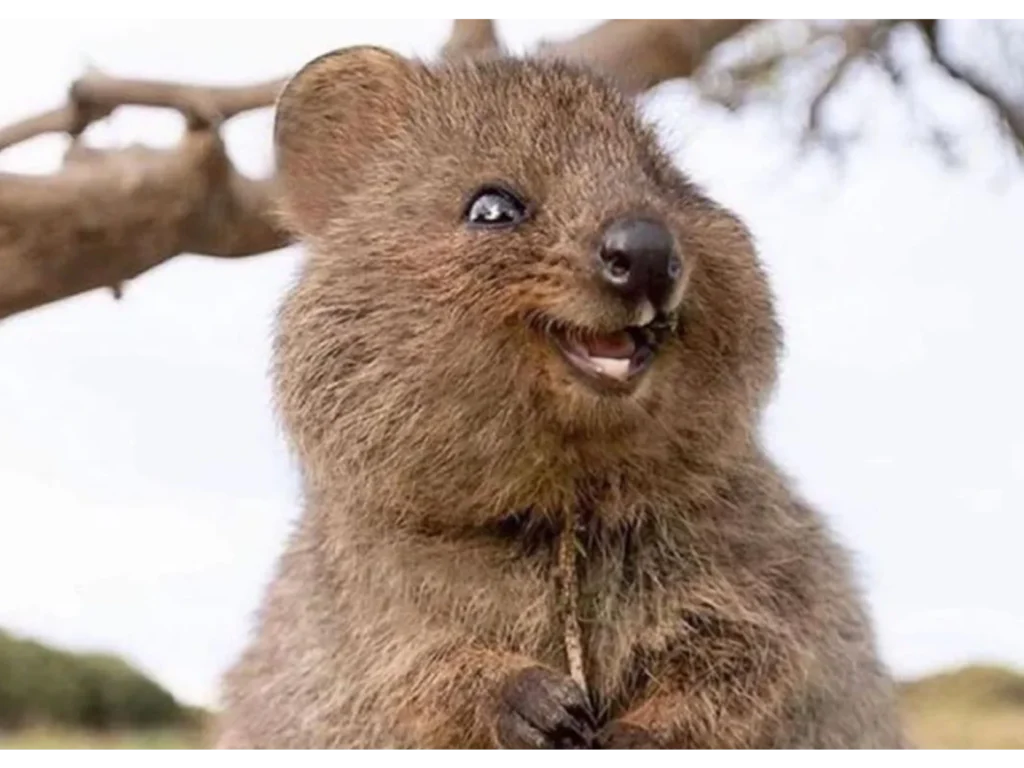
Classification and Evolutionary Background
Quokkas belong to the macropod family (Macropodidae), which includes kangaroos, wallabies, pademelons, and tree kangaroos. Within this family, the quokka is unique because it is the only species in the genus Setonix.
Their evolutionary lineage diverged from other macropods millions of years ago, adapting to more confined habitats where small size and browsing ability were advantageous. Fossil evidence shows that macropods once had a much wider distribution across Australia. The quokka’s survival on isolated islands like Rottnest and Bald Island is a reminder of how environmental change and human activity can shrink a species’ range drastically.
Habitat and Distribution
Historically, quokkas were found across much of southwestern Australia. Today, their distribution has contracted dramatically due to habitat loss, predation, and other pressures.
Current Range
- Rottnest Island (largest and most famous population, near Perth)
- Bald Island (off Albany, Western Australia, with a predator-free population)
- Mainland pockets in the forests and shrublands of southwest Australia, though numbers there are far lower than on the islands.
Preferred Habitat
Quokkas favor dense vegetation that provides shade and cover. They are especially associated with:
- Coastal heathlands
- Swampy areas
- Dense forests of paperbark, jarrah, and karri trees
They are nocturnal, usually hiding in thick underbrush during the day to avoid predators and emerging at night to feed.
Diet and Feeding Habits
Quokkas are herbivores and feed on a variety of native vegetation.
- Main diet: grasses, leaves, stems, and bark
- Seasonal foods: succulents and other moisture-rich plants during dry months
- Adaptations: They can survive long periods without free water, deriving much of their hydration from food. Their digestive system is similar to other macropods, using microbial fermentation in the stomach to break down fibrous plants.
On Rottnest Island, they are notorious for approaching humans and scavenging food scraps, but this is harmful to their health. Foods high in sugar, starch, or processed ingredients can cause a condition known as lumpy jaw disease, a bacterial infection of the jawbone.
Behavior and Lifestyle
Activity Patterns
- Nocturnal: Active at night, resting during the hot daytime hours.
- Shelter: They construct and use small tunnels through vegetation, known as “runs,” to move safely and quickly between feeding areas.
Social Structure
- Quokkas are semi-social. They do not form large herds like kangaroos, but they can often be seen in small groups, particularly in food-rich areas.
- Males may compete for mates but are not highly aggressive compared to other macropods.
Reproduction
- Breeding season: Mainly in late summer to early autumn.
- Gestation: About 27 days.
- Pouch life: Joeys remain in the mother’s pouch for 6 months, then gradually leave but continue nursing for several more months.
- Unique adaptation: Like other marsupials, female quokkas can practice embryonic diapause—delaying the development of an embryo until conditions are favorable.
Defense Mechanisms
Quokkas are small and relatively defenseless, but they rely on:
- Camouflage: Blending into the underbrush.
- Agility: Quick hopping and darting through vegetation.
- Reproductive strategy: If pursued, a female may eject her joey from the pouch. The predator is distracted by the moving joey, giving the mother a chance to escape. While grim, this adaptation increases adult survival and future reproductive potential.
Ecosystem Role
Quokkas play a subtle but important role in their ecosystems:
- Seed dispersal: By eating fruits and plants, they help spread seeds across their habitats.
- Vegetation control: Their browsing influences plant community composition.
- Prey species: On the mainland, they historically served as prey for predators like dingoes and birds of prey.
Their presence is a sign of healthy undergrowth and intact habitats, particularly on islands where ecosystems are more delicately balanced.
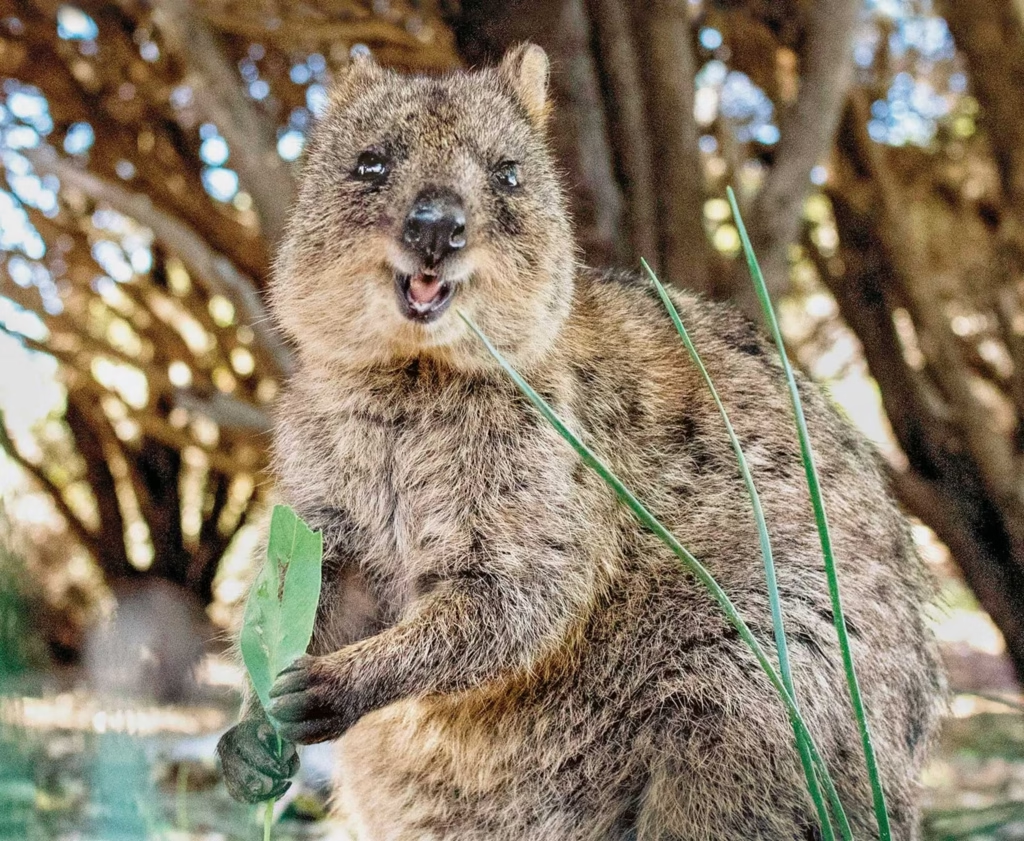
Threats and Conservation
Quokkas are currently listed as Vulnerable by the International Union for Conservation of Nature (IUCN). Their populations face multiple threats:
- Predation
- Introduced predators like foxes, cats, and dogs have devastated mainland populations.
- Islands free of these predators (like Bald Island) have much healthier populations.
- Habitat Loss
- Logging, agriculture, and urban expansion in southwest Australia have fragmented their habitats.
- Climate Change
- Increased heat and more frequent bushfires reduce the availability of cool, moist shelters.
- Human Interaction
- On Rottnest Island, close contact with tourists poses risks through feeding, disease spread, and stress.
Conservation Measures
- Protected areas: Rottnest Island and Bald Island serve as refuges.
- Predator control programs: On the mainland, efforts to control fox and cat populations are ongoing.
- Tourism guidelines: Strict rules prohibit feeding or handling quokkas.
- Research and monitoring: Continued ecological studies ensure that conservation strategies remain effective.
Cultural Impact and Public Fascination
In the age of social media, few animals have risen to fame as quickly as the quokka. Their natural “smile” makes them seem friendly and photogenic, leading to the phenomenon of the “quokka selfie.”
- Tourism: Rottnest Island has branded itself around the quokka, with thousands of visitors traveling each year specifically to see and photograph them.
- Mascot status: The quokka has been used in Australian promotional campaigns, sporting events, and even as the mascot for the 2022 Commonwealth Games in Birmingham.
- Symbol of positivity: Their smiling faces have become internet symbols of joy, friendliness, and optimism.
While this fame has boosted awareness, it also brings challenges—ensuring that human attention does not harm the animals.
Summary: Facts at a Glance
| Attribute | Details |
|---|---|
| Name | Quokka (Setonix brachyurus) |
| Nickname | “The Happiest Animal in the World” |
| Length | 40–54 cm (16–21 in) |
| Tail Length | 25–30 cm (10–12 in) |
| Weight | 2.5–5 kg (5–11 lbs) |
| Diet | Herbivorous – grasses, leaves, stems |
| Lifespan | 10 years (wild), up to 15 years (captivity) |
| Activity | Nocturnal |
| Breeding | Joeys stay in pouch ~6 months |
| Habitat | Coastal forests, shrublands, islands |
| Range | Rottnest Island, Bald Island, southwest mainland Australia |
| Conservation Status | Vulnerable (IUCN) |
| Distinctive Traits | Constant “smile,” small macropod, short tail |
| Closest Relatives | Kangaroos, wallabies |
Final Thoughts
The quokka is far more than a social media celebrity—it is a living reminder of the diversity, resilience, and vulnerability of Australia’s unique wildlife. Its cheerful appearance hides the challenges it faces: shrinking habitats, introduced predators, and human pressures. Yet, through conservation efforts and growing public awareness, there is hope that the “happiest animal in the world” will continue to thrive for generations to come.
By protecting quokkas, we also protect the ecosystems they inhabit and the broader natural heritage of Australia. Whether seen in person on Rottnest Island or admired from afar through photographs, quokkas inspire joy and curiosity—proof that sometimes, even the smallest animals can have the biggest impact on our hearts.

